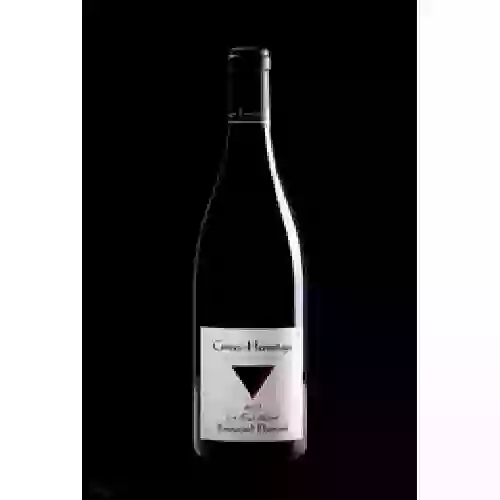
Domaine Jean-Louis ChaveCrozes-Hermitage Sybele
In the mouth this white wine is a powerful.
This wine generally goes well with pork, poultry or rich fish (salmon, tuna etc).
Taste structure of the Crozes-Hermitage Sybele from the Domaine Jean-Louis Chave
Light | Bold | |
Dry | Sweet | |
Soft | Acidic |
In the mouth the Crozes-Hermitage Sybele of Domaine Jean-Louis Chave in the region of Rhone Valley is a powerful.
Food and wine pairings with Crozes-Hermitage Sybele
Pairings that work perfectly with Crozes-Hermitage Sybele
Original food and wine pairings with Crozes-Hermitage Sybele
The Crozes-Hermitage Sybele of Domaine Jean-Louis Chave matches generally quite well with dishes of pork, rich fish (salmon, tuna etc) or mature and hard cheese such as recipes of pan-fried carrots, risotto with fresh salmon and zucchini or truffle with cantal and saint-nectaire cheese.
Details and technical informations about Domaine Jean-Louis Chave's Crozes-Hermitage Sybele.
Discover the grape variety: Bachet
Bachet noir is a grape variety that originated in France (Aube). It produces a variety of grape specially used for wine making. It is rare to find this grape to eat on our tables. This variety of grape is characterized by small bunches, and grapes of small size. Bachet noir can be found cultivated in these vineyards: South West, Cognac, Bordeaux, Provence & Corsica, Rhone Valley.
Informations about the Domaine Jean-Louis Chave
The Domaine Jean-Louis Chave is one of of the world's great estates. It offers 14 wines for sale in the of Crozes-Hermitage to come and discover on site or to buy online.
The wine region of Crozes-Hermitage
The wine region of Crozes-Hermitage is located in the region of Rhône septentrional of Rhone Valley of France. Wineries and vineyards like the Domaine Combier or the Domaine M. Chapoutier produce mainly wines red and white. The most planted grape varieties in the region of Crozes-Hermitage are Marsanne, Roussanne and Mourvèdre, they are then used in wines in blends or as a single variety.
The wine region of Rhone Valley
The Rhone Valley is a key wine-producing region in Southeastern France. It follows the North-south course of the Rhône for nearly 240 km, from Lyon to the Rhône delta (Bouches-du-Rhône), near the Mediterranean coast. The Length of the valley means that Rhône wines are the product of a wide variety of soil types and mesoclimates. The viticultural areas of the region cover such a distance that there is a widely accepted division between its northern and southern parts.
News related to this wine
An overview of Saint-Véran appellation
Let’s have a look at Saint-Véran vineyard and discover the magnificent and very diverse landscapes of this appellation situated in the South of Bourgogne. Saint-Véran is one of the 5 Village appellations with Pouilly-Fuissé, Pouilly-Vinzelles, Pouilly-Loché and Viré-Clessé. Like them, it produces only white wines from the Chardonnay grape. What makes it special is that the vineyard is cut in two dinstinct parts by the vineyard of Pouilly-Fuissé. As anywhere else in the vineyard in Bourgogn ...
What are the "Climats de Bourgogne" ?
Awaken the explorer within you and discover the most famous Climats of Bourgogne! Our social media: Facebook: https://www.facebook.com/BourgogneWines/ Twitter: https://twitter.com/BourgogneWines/ Instagram: https://www.instagram.com/vinsdebourgogne/ LinkedIn: https://www.linkedin.com/company/bivb Find out more on our website: https://www.bourgogne-wines.com/ ...
The Morey Saint Denis appellation seen by Laurent Lignier
Laurent Lignier from Domaine Hubert Lignier and Président of the winegrowers union, mentions the great diversity in the expression of the Morey-Saint-DenisPremier Cru wines. This video is taken from the “Rendez-vous avec les vins de Bourgogne” program broadcasted in April 2021. Our social media: Facebook: https://www.facebook.com/BourgogneWines Twitter: https://twitter.com/BourgogneWines/ Instagram: https://www.instagram.com/vinsdebourgogne/ LinkedIn: https://www.linkedin.com/company/bivb ...
The word of the wine: Consistency
In tasting, it is the equivalent of chewing (the chewiness of a tannic red wine is also mentioned). We then speak of firmness, fluidity, softness, hardness, and why not the crunchiness of an early wine by reference to the grape.













